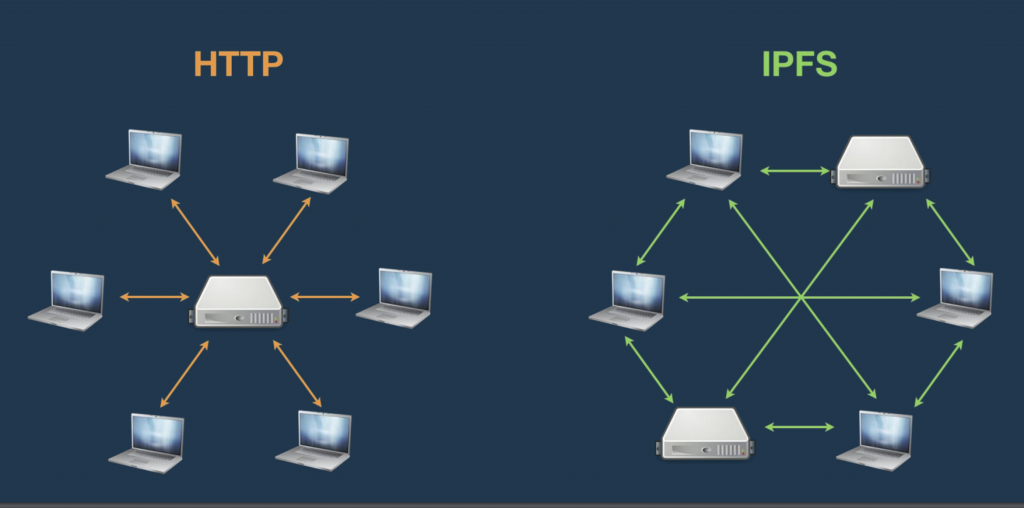As you are aware the world is moving toward decentralized systems from centralized ones. Current web architecture is highly dependent on the central location of the data served by the servers. Although distributed geographically, it is still a client-server architecture and hence is commonly categorized as centralized architecture. With the increased usage of blockchain-based technologies, the world has now taken note of the need for decentralized architecture for the web and that is where the IPFS i.e. InterPlanetary File System comes into the picture.
What is IPFS?
In simple terms, it is a peer-to-peer hyper-media protocol for storing and sharing data. It enables the creation of distributed applications with a special focus on making the web faster and more open. It also refers to the distributed file system that can connect all the computing devices with the same system of files. As you can see the same term is being used for protocol as well as a file system. And if you dig deeper there is more usage of the same term:
- As a protocol – defines content-addressed file system, helps content delivery
- As a file system – has directories and files and can be a mounted file system
- As a web – content can be accessed via HTTP
- As CDN – a file added locally can be easily accessible globally just like CDN

IPFS is still in the development stage but is generating a lot of buzz. Recently, the 80+ developers/implementers got together to push the implementation further.
IPFS was created back in 2014 and its alpha version was launched in 2015. Since then it has gathered good momentum along with other distributed technologies.
Use cases
Some interesting use cases are emerging out of this emerging technology.
- Microsoft’s self-sovereign identity system, Microsoft ION, is built on the blockchain and IPFS.
- Brave uses Origin Protocol and IPFS to host its decentralized merchandise store.
